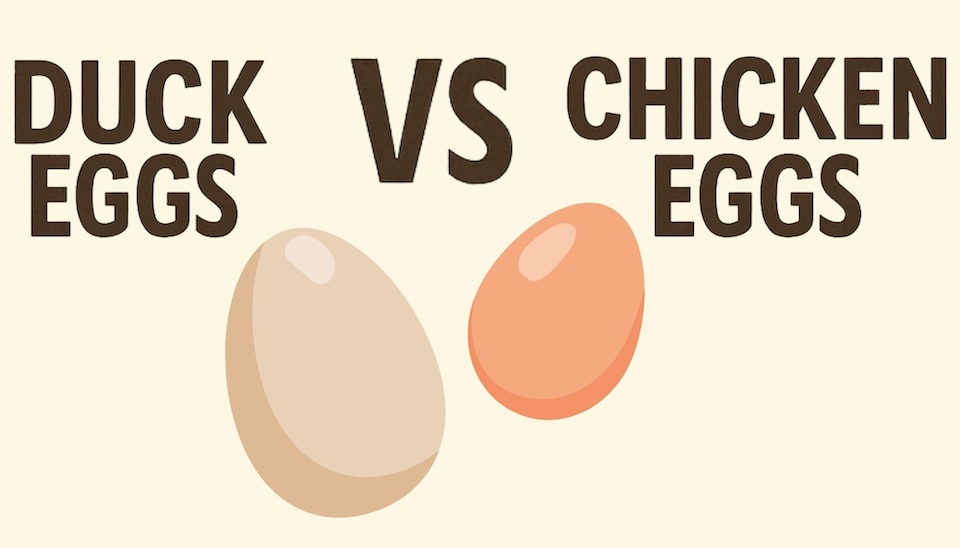How to Prevent a Muddy Chicken Run
How to Prevent a Muddy Chicken Run
As much as free-range sounds like a great way to keep chickens, in Australia we have many predators that see hens as a tasty lunch. To protect hens from ending up on the menu of predators, many backyard chicken farmers in Australia have a coop with a chicken run. A chicken run offers protection from other birds and animals. It also protects your garden from mischievous chickens!
Generally, a chicken run is enclosed using chicken wire, cage wire or another favourite is bird netting. However, if you do not plan out the chicken run, it can present its own challenges. One of the main ones is drainage. Because chickens scratch, the ground in small runs quickly turns to dirt. When it rains, the run becomes mud and a poorly planned run can take months to dry.
We are often asked how to prevent a muddy chicken run. A little mud now and then is not a problem. However, if the run is always muddy, you are inviting trouble as well as sickness. As chickens walk through the mud, their droppings will grow bacteria. Hens then transfer this throughout the run and also the chicken coop.
Parasites that make chickens ill, like coccidia and worms, thrive and spread in muddy conditions. Whereas dry, sunny conditions can kill many common parasites and disease spores, meaning that your chickens will be healthier.
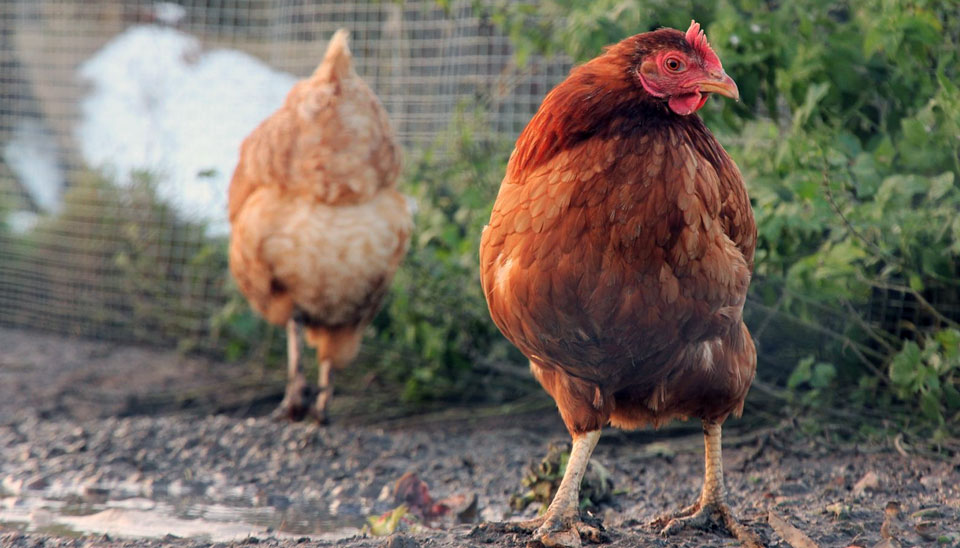
We have some solutions
We have some great solutions to this problem so your poultry can enjoy a healthy daytime environment to roam.
Option 1: Install a roof
There are many advantages to having a chicken run with a roof. If the roof is high enough, it allows sunlight in from the sides, which is very important. Sunlight stimulates the hormones required to lay eggs. A high roof will also help keep extreme heat off the chickens while open netted or wired sides allow air flow for cooling. Roofed runs also prevent predators that can fly or climb, such as birds of prey and foxes. Roofs keep wild birds out as well, which prevents the spread of worms and other chicken diseases.
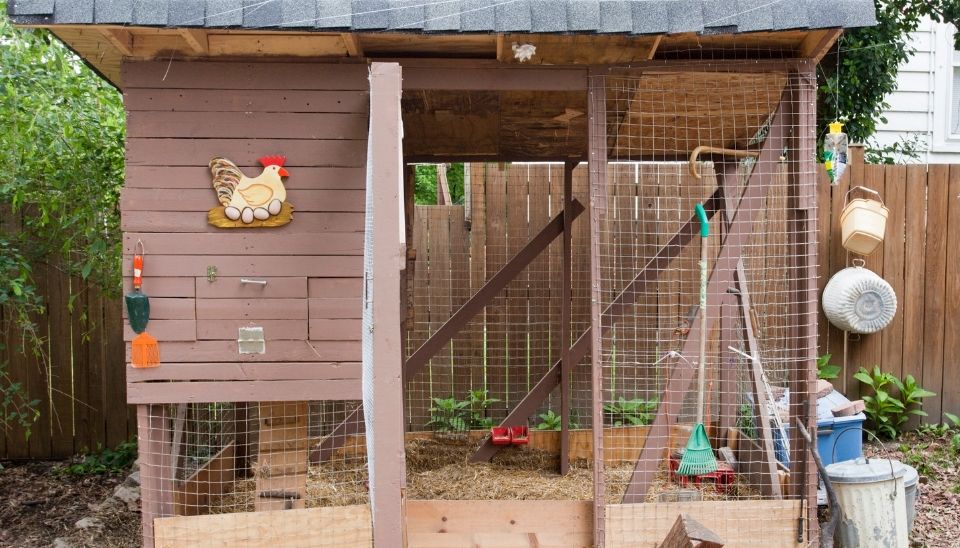
The other obvious benefit of a roof is it will stop rain drenching the chicken run. The rain may blow in from the side, but it will dry out much faster. If you do end up with some muddy puddles in the pen after rain entering from the sides, fill them up with some sand.
Many backyard chicken and poultry keepers use clear Laserlight roofing sheets which allow sunlight through but keep the rain out. If you are skilled enough to build a frame, install some joists and bearers. There are plenty of YouTube videos on how to achieve this type of construction.
Option 2: Make the chicken run well-drained
Another top idea to prevent a muddy chicken run is to make the chicken run well-drained. There are some serious advantages of a well-drained chicken run:
Lots of Grass
Chickens naturally love foraging in the grass for insects and worms. If you have placed the chicken run in a well-drained area, then the grass will grow, and the chickens will love you for it. You should consider having a sheltered spot for the chickens to enjoy if it is raining.
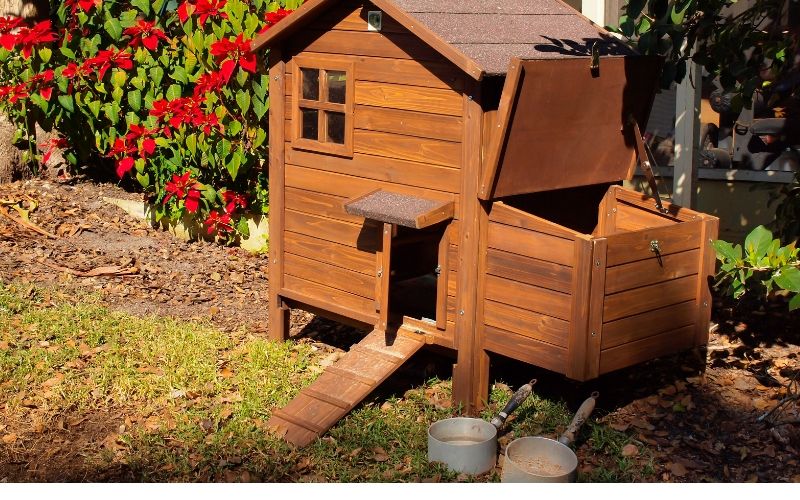
Less Muddy Puddles
Rain will drain away faster in a drained area, meaning less chance of muddy puddles. This makes the run a much healthier environment for your hens to enjoy.
A great way of ensuring the chicken run is well drained is to choose a spot which is already well-drained. Another possibility is to build up the area where the run will be, using a layer of sand or sandy soil about 8cm thick. Then put on a layer of topsoil of 8cm - 10cm, then seed with grass. This will allow rain to flow through the layers and drain away easily.
Option 3: Sand
If you do not have the option of a roof or a well-drained chicken run, then this is another great solution. Put down a layer of sand 10-15cm thick across the wettest areas of the run. Try, where possible, to keep a grassy area also. Remember, do not dig a pit and fill it with sand. You are trying to drain water away, so having an elevated sand area allows water to pass through.
What type of sand can be used in a chicken coop / run?
We recommended either washed river or beach sand as it drains easily and allows rain to run through it without leaving puddles.
Where can I purchase sand for the chicken coop?
Depending on the size of the chook pen you may need one or two cubic metres. Contact your local landscaping, garden or hardware store.
Benefits of sand
Sand doesn't decompose like wood chips. It also allows rain to flow through without restriction so you can say goodbye to muddy puddles. Chickens also use sand as a dust bath. Chickens use a dust bath to help remove parasites like mites and lice.
Maintenance of Sand Layer
When the sand is dry or spoilt with chicken poop, simply use a small shovel to scoop it out. Every now and then, you may need to top up the layer.
Sand is best in relatively flat areas. If the run is on a slope, erosion may be an issue.
Greens are Important
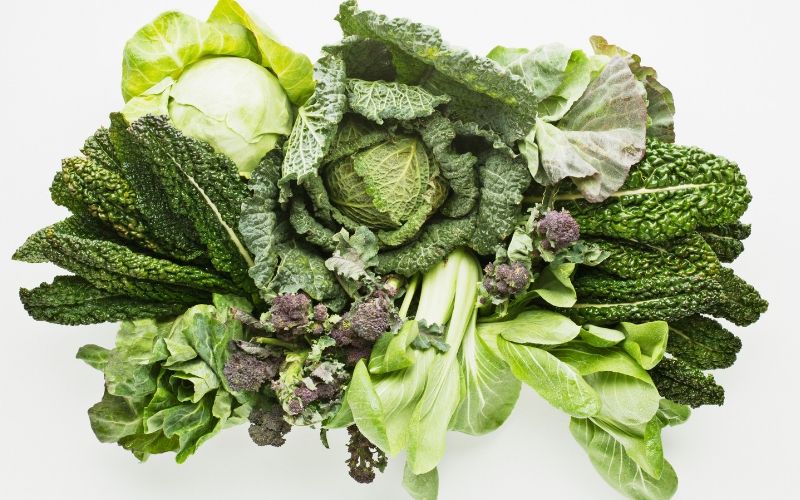
If you use
Bok Choy, Silverbeet, Spinach, Cabbage, Lettuce, Green Beans or Legumes.
Option 4: Sunlight
Sunlight will naturally dry out a wet or muddy chicken run. Locating your run in an area that gets plenty of sunlight helps prevent muddy areas from forming and also deters many parasites and illnesses that live in the soil. Make sure your birds have some dense shade to escape the summer heat as well!
If you go ahead with our advice on How to prevent a muddy chicken run, we'd love to know how our article helped with your chicken run so send us an email.


